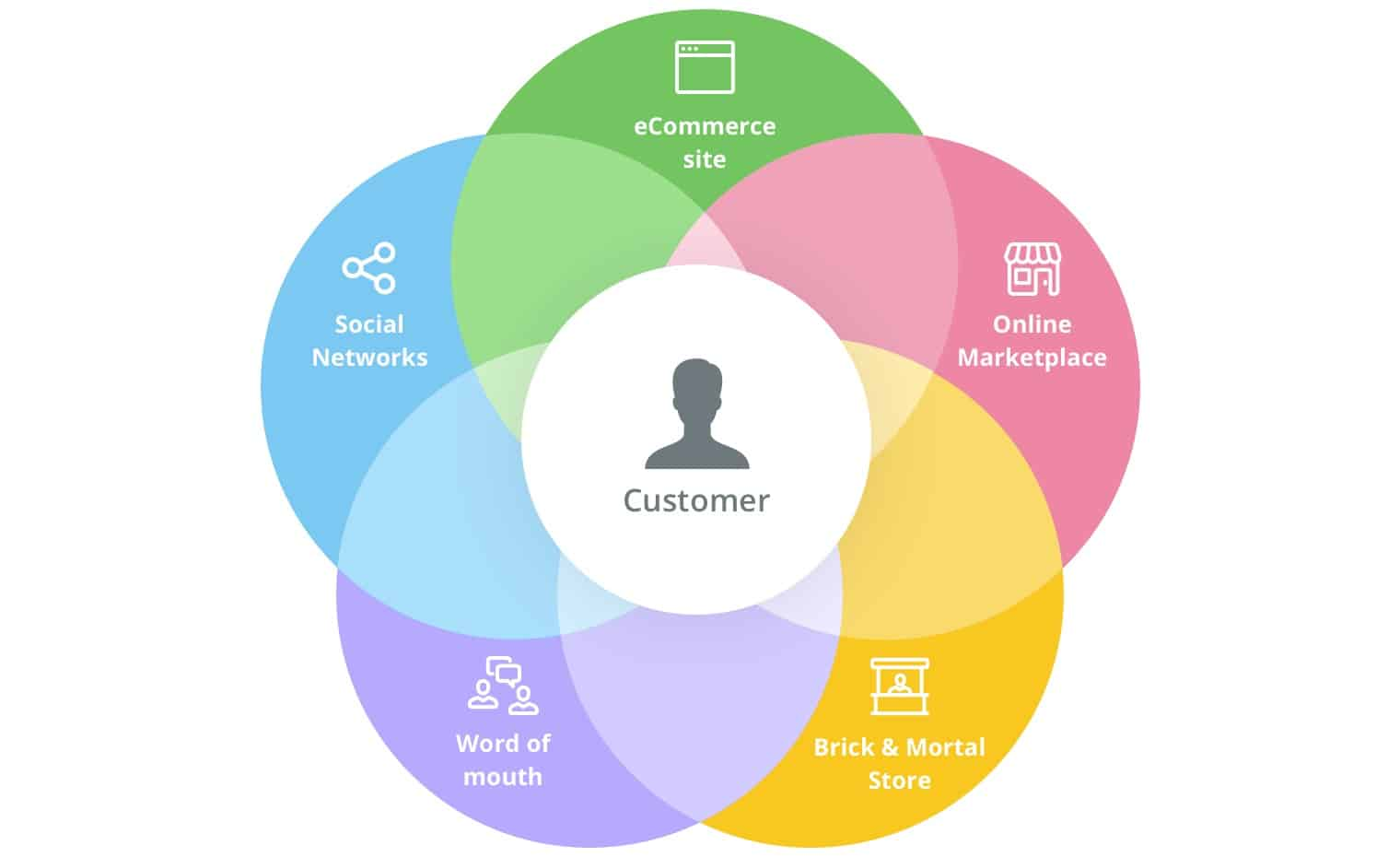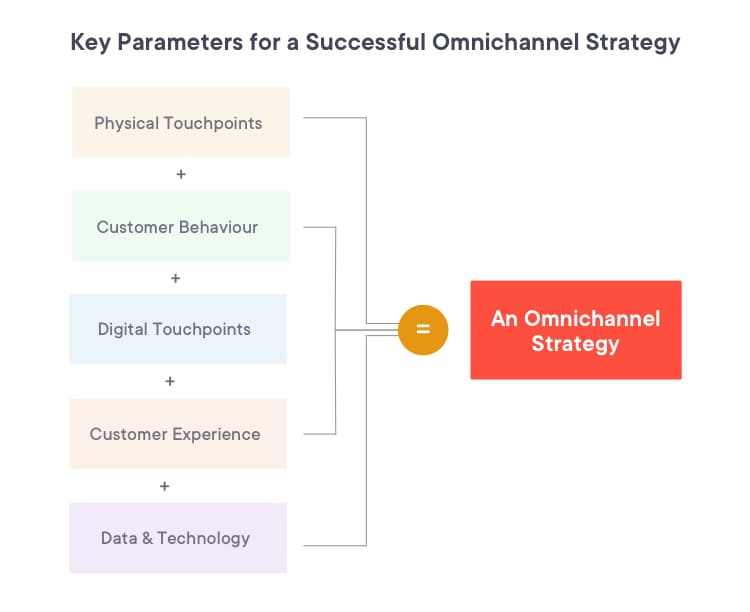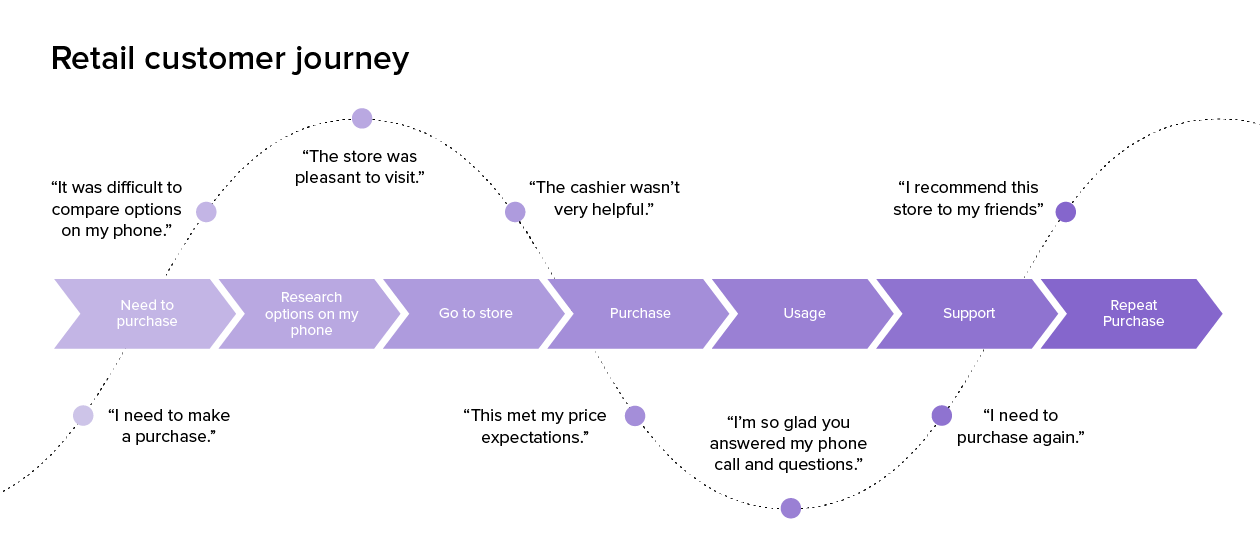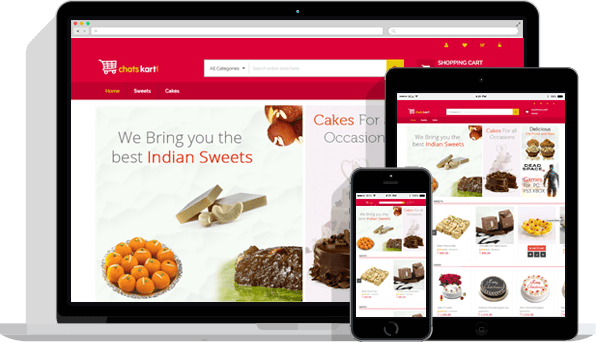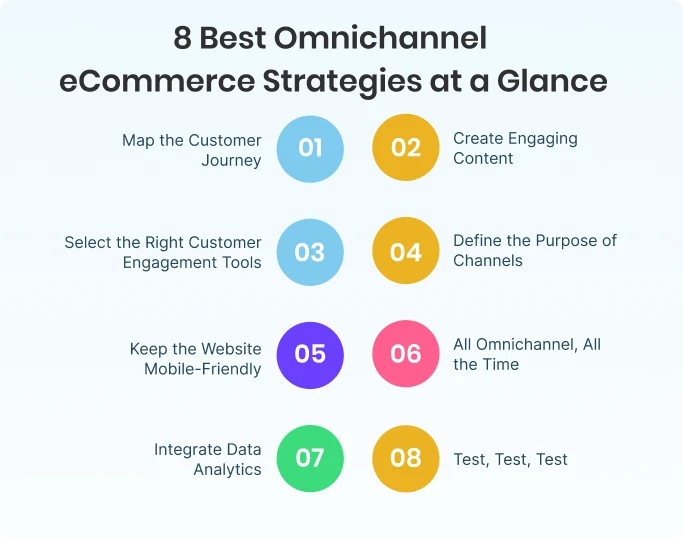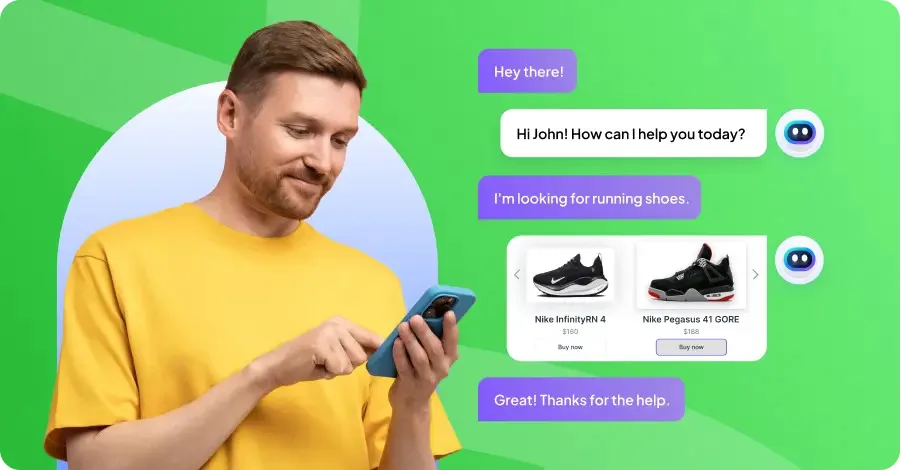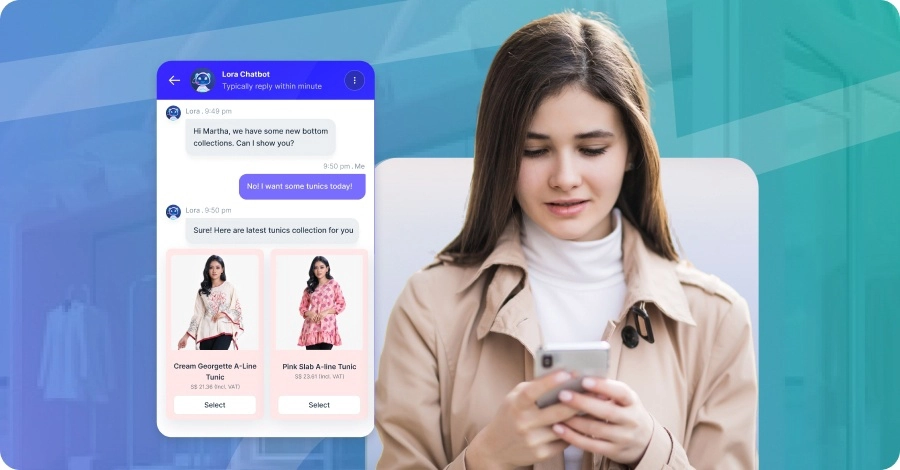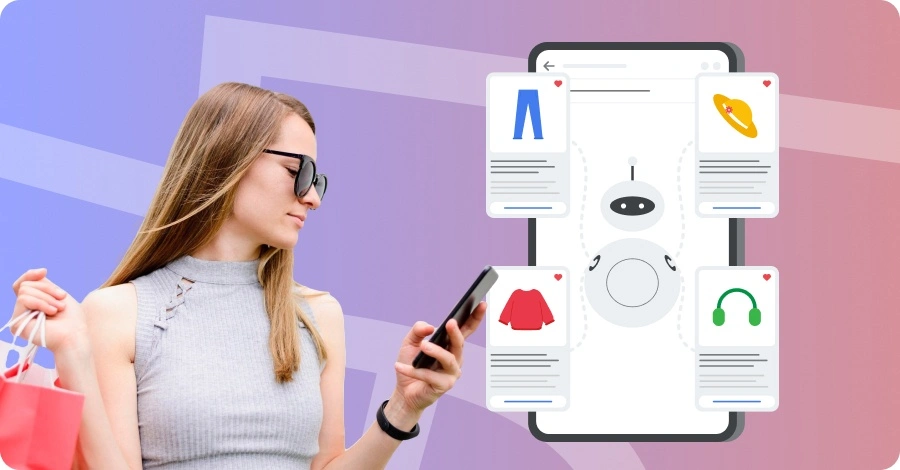What is Omnichannel eCommerce? Retail Strategy & Trends (2025)
- March 31, 2021
- 17 mins read
- Listen

Table of Content
Let’s start with a common scenario: your customers are trying to reach you through various platforms. To make it convenient for them, you offer multiple communication channels for your eCommerce business, such as your website, mobile app, text campaigns, and social media platforms. Some customers engage with you on your website, others on your mobile app, and a few on social media.
However, you will only be able to provide a unified and consistent experience if these communication channels are interconnected. This inconsistency can lead to frustration and dissatisfaction among your customers, as they expect a seamless transition between online and offline interactions. Also, without omnichannel integration, managing inventory across multiple channels becomes complex. This can result in stockouts, overstocking, and difficulties in fulfilling orders, ultimately impacting customer satisfaction and profitability. This is where omnichannel eCommerce comes into play.
Here in this blog, we will explore more about omnichannel eCommerce, its benefits and the steps for implementing an omnichannel eCommerce strategy, from integrating various communication channels to leveraging data for personalized marketing.
What is Omnichannel eCommerce?
Omnichannel retail, or eCommerce omnichannel, refers to a sales approach that utilizes multiple channels to deliver a unified purchasing experience to customers.
This seamless experience is maintained across all channels, whether customers shop in-store, online, through mobile apps, or other digital platforms. Omnichannel eCommerce may include online storefronts, brick-and-mortar stores, marketplaces, Instagram eCommerce, and other social media-supported stores.
Having a strong omnichannel eCommerce strategy focuses on the entire buying experience of the customer not just the individual experiences on different channels. The final purchase decision happens based on the information collected by the consumers from different sources.
What is an Omnichannel eCommerce Strategy?
In simple terms, a good omnichannel eCommerce strategy is a comprehensive plan that companies use to provide a smooth and consistent experience for customers across different sales and communication channels.
Such strategies ensure that customers can get in touch with a brand when required through multiple channels like online and offline stores, mobile apps and social media platforms with unified data and consistent messaging across all platforms. Here the objective of the company is to offer consistent and personalized experiences to their customers across all the communication channels.
Difference Between Multichannel Vs Omnichannel eCommerce
Myth: The concept of omnichannel and multichannel marketing both are same.
But they are not. Both of these strategies may use multiple channels to reach their target audience but there are fundamental differences between them. Let us break down both the strategies one by one:
Multichannel eCommerce focuses on selling products on different channels, both online and offline. You interact with customers via social media, website, apps, phone, and in-store. But the channels are not connected, which fails to deliver a similar experience. As customers expect a consistent experience across all these channels which is where omnichannel comes into play.
The omnichannel retailing or eCommerce focuses on delivering a consistent shopping experience irrespective of the channel preferred by the customers. As all the channels are connected, brands can foresee what customers are looking for and deliver a personalized experience across all platforms.
Benefits of Omnichannel eCommerce Platforms
eCommerce brands that are going omni channel witness many significant benefits. Having an omnichannel eCommerce platform impacts the business by delivering a great omnichannel customer service experience and enhancing brand credibility.
The brands that offer an omnichannel eCommerce platform to can offer excellent solutions to their customers and also witness significant benefits to their business.
Here are the key benefits why brands should shift towards an omnichannel eCommerce platform:
Consistent Brand Message
Providing omnichannel eCommerce solutions focuses towards offering customers with cohesive messaging about your brand. No matter where a customer reaches out to your brand, the messaging remains unaltered.
Understand Customer Journey Better
Omnichannel commerce platform allow brands to collect and merge customer data from multiple channels. The amalgamated data gives a full picture of types of customers interested in your brand, their behavior, which helps to personalize customer journey.
Personalized Customer Experience
A thorough understanding of the customer journey can help you to personalize your customers’ experience. Creating a personalized experience is vital to omnichannel customers as they have a 30% higher lifetime value over shoppers who only purchase using one channel.
Boost Sales Conversion
Having an omnichannel marketing strategy for eCommerce in place helps in understanding customer’s purchase behavior and developing stronger relationships with customers, which has a direct impact on sales.
How to Master Omnichannel eCommerce Solutions: 8 Best Strategies
Now that we have comprehensively discussed the differences between omnichannel and multichannel eCommerce and the key benefits of the latter, let us discuss the key components of building a strong omnichannel strategy.
1. Map the Customer Journey
While there won’t be just one journey that every customer takes as they work their way from discovering your brand to purchasing a product to raving about it on social media, it’s useful to start defining various potential journeys they might take.
A good place to start is by defining the different stages of your customers’ purchase behavior – problem recognition, interest, research, purchase, etc.
Once you do that, you can start dissecting why they’re interacting with you at each stage, and what their goal is – research, comparison, purchase – and start making it easier for them to achieve those goals.
Developing your customer personas is a good way to start identifying where and why they’re interacting with you.
For example, maybe your customers are finding you through your Instagram, while older customers are more likely to find you in the Google search results.
Now, bring it all together and map the customer journey. Each of the touchpoints during their journey is a chance to interact with them in a way that makes their experience better, and more likely to convert – and the crux of all of it is recognizing that every channel in your strategy matters.
2. Create Engaging Content
Using that nifty map you just created for yourself, you can start brainstorming targeted content that aligns with the platform it’s going on and helps you achieve your goals on those platforms.
Here are some tips that you can follow to make content more engaging.
- Take some beautiful product shots of a new line that you want to announce on Instagram, to get your customers excited about the new launch and keep them in the loop for when it’s going live.
- Film behind-the-scenes TikTok that’s interesting, use trending audio, and show interesting parts of the process that people will be interested in watching.
- Write some captivating email subject lines to the A/B test for your next email marketing campaign.
No matter what you create, all of the content you produce should be able to point back at the customer journey and customer goals.
3. Select the Right Customer Engagement Tools
Now is not the time to throw darts at a board and go with whichever platforms they land on – but it’s also not good to assume that the most popular ones will be the best choice.
It is when you put your knowledge of your customers to use, study your customer personas and align them with platform demographics to find the perfect match(es).
The tools that can be used to enhance omnichannel customer experience at different touchpoints.
- Chatbots – Leverage chatbots to engage with customers 24×7 and deliver real time responses for simple queries.
- Live chat – Deliver real time assistance to the sales or support-related queries with live chat and boost customer satisfaction.
- Visual engagement tools – Tools like co-browsing and video chat, you can have a direct conversation that helps to identify the issue faster and deliver personalized solutions.
By using digital tools and customer engagement strategies, provide real time response, and effective solutions. You can strengthen your relationship with existing customers and increase brand loyalty.
4. Define the Purpose of Channels
So far we’ve focused on selling on various channels because that is the foundation of omnichannel, but it’s important to remember that you don’t need to use every channel you’re on for selling products directly to your customers.
Once you select all the channels you want to be present on, decide the purpose of each one – selling or not. Defining the purpose for each channel also means committing to creating content for each of those channels – not reposting the same content everywhere, but creating (or at least reworking) content that is tailored for each platform.
A one-size-fits-all approach will not yield the same results from one channel to another.
A classic example of this is when a B2B eCommerce company creates content and then publishes it on Twitter, Facebook, or LinkedIn without even tweaking their caption or changing the hashtags from one channel to the next. Not only does each platform have its own guidelines for content best practices, the way your audience uses each platform will vary. Your content should meet their expectations for the channel it appears on.
5. Keep the Website Mobile-Friendly
Honestly, whether you are selling on your own website or not, you need to make it optimized for mobile. Anyone who visits your website on their phone, customer or not, should be greeted by an experience tailored to their usage.
An effective mobile website is easy and intuitive to navigate, has clearly labeled and separate sections, accessible buttons, and an easy-to-use search bar. You want viewers to be able to find what they want as quickly and easily as possible.
6. All Omnichannel, All the Time
The biggest mistake that businesses make when implementing an omnichannel strategy is thinking only of the sales. Sure, sales are important, but so is every other part of your business, and it all needs to be omnichannel too.
These days, when a customer has a question about a product, they’re not afraid to comment on the brand’s Instagram asking them about it. Does your customer service team know that? Are they prepared to not just handle questions coming in through the website, but on all channels?
This also applies to recognition when moving from platform to platform. When a potential customer adds something to their cart from your store while on Facebook, they should be able to head to your mobile website and still see that item in their cart – i.e. you should be able to recognize them no matter what platform they’re using. Omnichannel applies to everything: customer support, campaigns, websites, automation tools, social media comments, and any other facet of your business.
7. Integrate Data Analytics
The only way you’re going to be able to use analytics and data about your customers is if you have it integrated across all channels (that should be starting to sound like a familiar refrain). When you have your analytics integrated across all channels, you can continually build more well-rounded customer personas as you get to know them better, and more well-informed customer journeys.
8. Test, Test, Test
As usual, this is not a “set it and forget it” kind of scenario. Instead, do your best to implement all the changes as well as you can, address speed bumps when you hit them, and once you’re comfortable, start iterating. The only way you’re going to know if your current methods are working the best they can is to see how they hold up to other methods.
Business Challenges with Omnichannel eCommerce
The purpose of omnichannel e-commerce is to provide customers with a seamless shopping experience across all channels. While the benefits and advantages are numerous, it also presents several business challenges. Below are the key challenges of omnichannel e-commerce but don’t worry, I have also included the solution.
-
Understanding the Most preferred Channel is Difficult
Customers often reach out to brands through their preferred channels, but identifying these favored platforms can be challenging. As a result, companies frequently miss opportunities to leverage the most effective communication channels for sales conversions.
-
Data Management Can be a Problem
As customers engage with your business through various channels, collecting data from each platform, managing and analyzing that information, and incorporating it into your omnichannel e-commerce strategy can be challenging.
-
Inability to Offer Personalized Customer Experience
Customers prefer personalized services, and failing to provide them is a significant challenge. If you struggle to centralize customer data, you won’t be able to segment different customer profiles systematically. This is a major obstacle to offering a personalized customer experience.
-
Lack of Attribution Clarity
To assess the performance of various campaigns and channels, you need to trace the origin of the leads. This requires comprehensive tracking of the customers’ journey. Did they first interact with you through a paid search, a social media ad, email, or another channel? Many companies struggle to sort this out, which can result in leads being grouped into broad categories, making it difficult to gain a clear and accurate understanding.
-
Low Inventory Visibility
This is a common challenge brands face when implementing omnichannel e-commerce. Often, they lack accurate information about stock levels across multiple locations. With customers placing orders through various touchpoints like websites, mobile apps, and social media platforms, not knowing your exact stock levels can lead to lost sales. There’s a high risk of promising products to customers that are actually out of stock.
Some other challenges you may face:
- Offering consistent and efficient customer service across multiple communication channels.
- Protecting customer details and transaction information from various cyber threats.
- High initial investment and maintenance costs for various technological infrastructures.
- Managing orders, shipping, and returns efficiently across different channels.
- Integrating various sales channels, inventory management systems, and customer relationship management (CRM) systems, can be challenging.
Overcome Your Omnichannel eCommerce Challenges
REVE Chat is an AI powered omnichannel customer engagement platform that lets you manage your omnichannel eCommerce business efficiently. It not only offers real-time customer assistance on your website, mobile app and other social media platforms like Facebook, Viber, Instagram, Telegram and WhatsApp but also seamlessly integrates all your communication platforms so that you can easily manage all customer interactions and important business data from a centralised location.
Also, REVE Chatbot is capable to automating most of your business operations including customer service even after your working hours or when all of your customer service agents are busy in other tasks.
Want to experience REVE Chat’s unique features firsthand? SIGN UP for a 14-day FREE TRIAL today!
The Future of Omnichannel eCommerce
As per a recent study, companies with effective omnichannel retailing retain over 89% of their customers, compared to those with weaker strategies. Furthermore, businesses with strong omnichannel customer engagement experience a 9.5% increase in annual revenue, whereas those with less effective strategies see just a 3.4% rise.
According to new research from Epsilon, 80% of consumers are more likely to make a purchase when brands provide personalized experiences.
As we can see, to keep up with the constantly evolving expectations of customers, omnichannel B2B and B2C eCommerce are rapidly adapting. Nowadays, customers are not limited to only online shopping; they are open to shopping anytime and anywhere, both through online platforms and in person. Additionally, they are also unwilling to compromise on customer service, product quality, convenience, or value.
So, what is the future of omnichannel eCommerce? Adaptability and responsiveness to the latest market dynamics will be crucial for companies aiming to thrive in the long-term e-commerce business. For instance, traditional brick-and-mortar stores are making a comeback to cater to customers who prefer in-person shopping, helping to reduce online store maintenance costs and minimize return rates.
To balance physical and online shopping, brands are introducing innovative concepts like virtual reality and live streaming to enhance the shopping experience.
In short, companies that work hard to keep up with changing customer expectations and market trends will stay ahead in the eCommerce business. Successfully incorporating these trends will be essential in shaping the future of omnichannel commerce.
FAQs on Omnichannel eCommerce
1. How to understand if my eCommerce business is the right fit to opt for omnichannel?
If your company is already engaging with your target audience through two or more communication channels, you need an omnichannel strategy to consolidate and manage all interactions on a centralized platform.
2. How to get started with omnichannel eCommerce?
To get started, first choose your preferred communication platforms and sales channels where your customers will interact with you. Then, create an omnichannel strategy and select a platform that meets your business needs.
I recommend REVE Chat, an AI-powered omnichannel eCommerce platform that offers instant customer service, personalized experiences, and centralized management of all customer interactions. SIGN UP for REVE Chat to experience its capabilities firsthand.
3. Can I manage customer interactions from multiple communication channels?
Yes, it’s possible. Omnichannel eCommerce tools like REVE Chat integrate with all your customer touchpoints, including your website, mobile app, and social media platforms, allowing you to manage all customer interactions from a centralized platform.
4. How can I measure the success of the omnichannel strategy for my eCommerce business?
You can measure the effectiveness of your omnichannel strategies by tracking key performance indicators (KPIs) such as:
- Customer satisfaction scores
- Churn rate
- Sales growth
- Customer retention rates
- Average order value
- Cross-channel engagement metrics
- Cart abandonment rate
- Net Promoter Score (NPS) etc.
5. How does AI help in omnichannel eCommerce?
Integrating AI with your omnichannel eCommerce platforms helps you to automate many of your business operations including customer service. Apart from that, AI will enable more precise personalization, predictive analytics for better inventory management, and enhanced data analysis for improved decision-making.
6. What are the future trends in omnichannel eCommerce?
With growing customer expectations, companies are adopting new omnichannel eCommerce strategies to remain competitive. Future trends include increased use of artificial intelligence (AI) and machine learning for personalized customer communication, the growth of mobile and social commerce, the integration of augmented reality (AR) and virtual reality (VR) for enhanced shopping experiences, and the rise of voice commerce.
7. What is the omnichannel social commerce platform?
An omnichannel social commerce platform enables brands to sell their products and services on various social media channels, such as Facebook and Instagram. These platforms integrate social media with eCommerce, allowing brands to engage seamlessly with customers across multiple social media channels.
8. How does Omnichannel eCommerce help in inventory management?
For successful omnichannel eCommerce, it’s important to integrate your inventory management system with all customer touchpoints to provide accurate information about available and sold-out stock. Implement a centralized inventory management system that offers real-time visibility of stock levels across all sales channels. This integration ensures accurate inventory information.
Wrapping Up!
I hope this blog helps you understand the concept of omnichannel eCommerce, including its benefits, challenges, and how to develop an effective omnichannel eCommerce strategy for your business.
Today, companies face the challenge of meeting high customer expectations. Customers interact with brands across multiple platforms and expect to have consistent and personalized experiences at every touchpoint. Omnichannel eCommerce addresses this challenge by integrating various channels to deliver a seamless, cohesive experience.
Creating an omnichannel eCommerce strategy isn’t just about following the latest trends; it’s also about meeting and surpassing customer expectations in this digitally connected world. By leveraging omnichannel eCommerce, brands can enhance personalization and ensure consistent messaging across all channels, which helps build stronger customer relationships, increase sales, and maintain a competitive edge.

